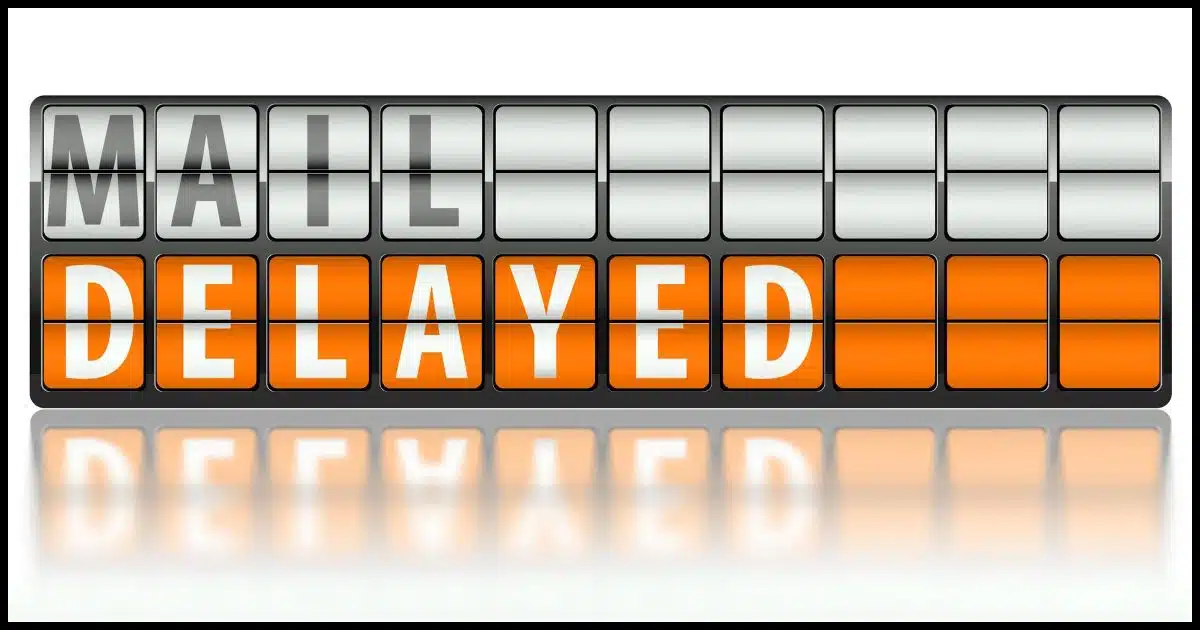Sometimes things take time.

I am trying to send an e-mail to a co-worker and I keep getting the following message:
Delivery Status Notification (Delay) This is an automatically generated Delivery Status Notification. THIS IS A WARNING MESSAGE ONLY. YOU DO NOT NEED TO RESEND YOUR MESSAGE. Delivery to the following recipients has been delayed.
The strange thing is that it is only happening with that specific email address. What does it mean, and why it is happening?
It means exactly what it says: the email you sent hasn’t been delivered yet. It’s been delayed.
The mail system will continue to attempt to deliver the email. Eventually, it’ll either be delivered or you’ll get a fatal-error message.
There are many reasons email can be delayed. If that’s a surprise to you, you might be thinking about email the wrong way.

Delivery Status Notification (Delay)
This means your email hasn’t been delivered yet, likely because of server or connectivity issues. The email system will keep trying, but delays are normal in email’s “store and forward” architecture. If the message is urgent, use other contact methods; otherwise, be patient.
Delays are normal
Many people don’t realize that email was never meant to be instant or even close to real-time. The entire email infrastructure expects and handles delays ranging from a few minutes to hours to even days. Most of the time, email arrives nearly instantaneously. You just can’t count on it.
Email is what’s called a “store and forward” system. When you send an email, it’s received by a mail server, stored for some period, and then forwarded to the next server in the path toward your recipient. Finally, it lands on your recipient’s mail server, where it’s stored until the recipient downloads it (another kind of “forward” to their inbox) or reads it online.
The period that a server holds on to your message before forwarding it is typically very short, but there’s no guarantee that it will be. There could be many legitimate delays along the path your email takes to get to your recipient.
That’s not the system being broken; that’s how the system works.
Help keep it going by becoming a Patron.
Resilience is baked in
The internet wasn’t always as reliable as it is today. Servers could be down for long periods of time, or the connections between them could fail. Sometimes the connections weren’t continuous at all.
The email system we still use today was built to handle instability gracefully and still get your email through.
That means that today — when, for example, your recipient’s mail server is temporarily off-line — the email system just deals with it.
Depending on the kind of failure, rather than not delivering the email, your mail server keeps trying to pass the message along. Sometimes, it’s nice enough to let you know by sending you the “Delivery Status Notification (Delay)” message.
Eventually, when the recipient’s mail server comes back online, the delivery succeeds.
Your message is important to us
There are many reasons email might be delayed.
- You sent it to the wrong email address — a typo, perhaps. This is perhaps the most common reason.
- Spam. Certain spam-fighting techniques can introduce artificial delays that foil some spambots.
- Overloaded email servers.
- Email servers with internet connectivity issues.
- Crashed email servers, or email servers that have been taken offline on purpose.
Only one of those — the first — is in your control. There’s nothing you can do to fix “Delivery Status Notification (Delay)” for any of the other situations.
Failure remains an option
Of course, a sending server will only try for so long. If I recall correctly, if the message cannot be delivered after five days, you’ll get an error message — a “bounce” message — that indicates a failure. Instead of a warning telling you that the mail was delayed, it’ll tell you that the message didn’t make it through.
If you do get a bounce message, examine it carefully to see if it includes additional information about the reason for the failure.
Do this
If you get a “Delivery Status Notification (Delay)” warning in response to a message you send, double-check that you have entered the email address correctly. If it is, then there’s nothing you can do but wait.
If your message is truly urgent, you may need to find a way other than email to connect.
Speaking of email, how about subscribing to my weekly newsletter, Confident Computing? Less frustration and more confidence, solutions, answers, and tips in your inbox every week.






If I get a Delay warning, I’ll send it again with a preface explaining that I’m sending it again because of a delay. The second email has always gone through immediately. I’ve never gotten a Delay warning on the re-sent email.
I ignore the message:
“THIS IS A WARNING MESSAGE ONLY.
YOU DO NOT NEED TO RESEND YOUR MESSAGE.”
You don’t need to resend it, but it doesn’t hurt and it’s better than waiting up to 5 days for the problem to resolve itself.
And sometimes an email will be delayed for hours or longer even without a notification or warning back to you. This is especially true of company/corporate/DOD networks which often scan every attachment for malware or unauthorized content before sending a new email that you drafted or allowing you to view an email sent to you. This is true of the two large defense contractors with whom I’m associated.